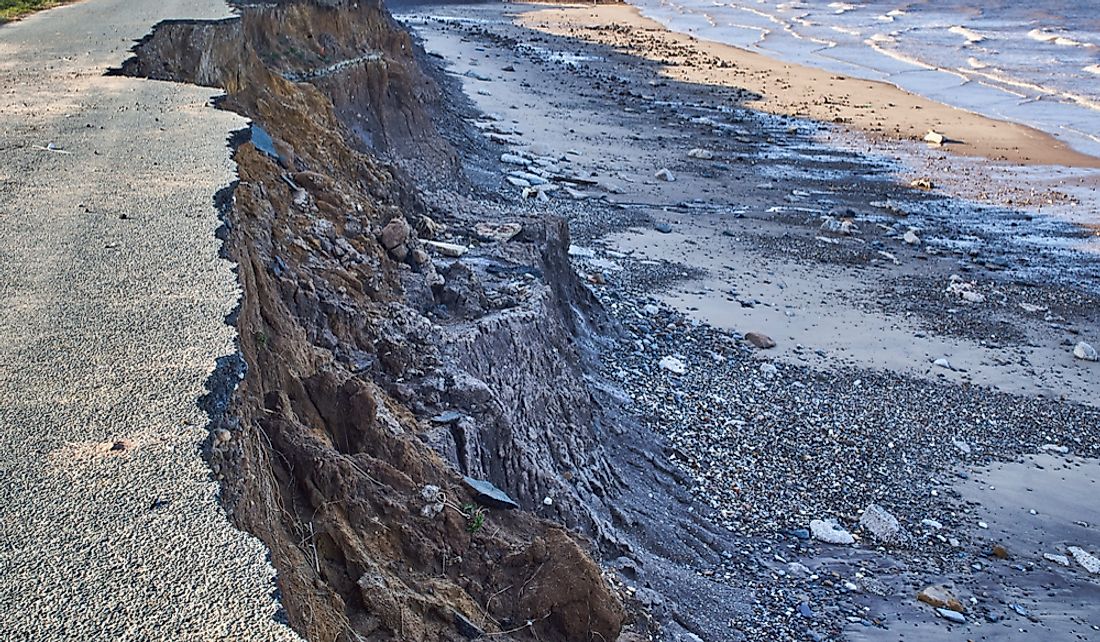What Is Soil Erosion?

Soil erosion is the washing away of the top layer of the soil by water, plants, animals, air, snow, or humans. It involves the displacement and deposition of the soil in other areas. The top layer is the most fertile and nutrient filled layer of the soils.
Types of Soil Erosion
Erosion By Water
Rain and water wash away the silt, sand and organic matter in the soil.
Raindrops splattering on the surface cause splash erosion, where the fine soils are displaced over a distance of about 2 ft upwards and 5 ft horizontally. This is the least severe of the erosions.
With increased rainfalls, the water washes away fine sand and sediments causing sheet erosion. This happens over a distance and the sediments are normally deposited along river banks and water bodies. This can also lead to rill erosion where small depressions are made on the ground or deeper ones which are referred to as gullies.
Erosion By Wind
This type of erosion occurs in areas of open land with little to no vegetation cover. Strong winds can blow up the fine sand particles over a distance as depends on the wind strength.
Deflation type of wind erosion is the carrying away of the silt and free soil on the surface. It is further divided into saltation, suspension, and surface creep.
Abrasion refers to wearing of the surface by particles carried around by wind hence making the soil susceptible to washing away.
Mass Movement
Mass movement refers to the movement downwardly due to the gravity of the soil. Mudslides, landslides, melting snow, avalanches cause the movement of soils and rock from slopes.
Factors That Contribute to Soil Erosion
Human Practices
Deforestation, overgrazing, construction, mining, and poor agricultural practices are some of the man-made factors that lead to erosion. These practices mostly lead to loosening of the soil making it easier for the agents to wash it away.
Climate Change
Higher rainfalls lead to more erosion especially in areas with no vegetation cover.
Soil Composition, Type, and Structure
Silt and sandy soils are more susceptible to erosion as compared to clayey soils due to the lower compactness of the former types.
Topography
Steeper slopes are more susceptible to erosion than flatlands, especially in the event of heavy rainfalls.
Consequences of Soil Erosion
Land Degradation
Soil erosion leads to loss of arable land, and leaves land less productive for agriculture, leading to poor yields and low food production. It also decreases the water holding capacity of the soil, leaving the land unable to absorb water, leading to flooding.
Pollution
Erosion leads to clogging of rivers and streams causing fish numbers to decline. The eroded soil loaded with fertilizers and pesticides pollutes the water bodies.
Airborne Dust Pollution
Soil particles carried by the wind are the main cause of air pollution which leads to health hazards.
Prevention of Soil Erosion
Vegetation
Planting of trees and crops leads to major prevention of water and wind erosion. The roots of trees help to hold the soil particles together making it compact.
Agricultural Practices
Good agricultural practices such as mulching, terracing, crop rotation, and mixed rotation also help to prevent soil erosion.











